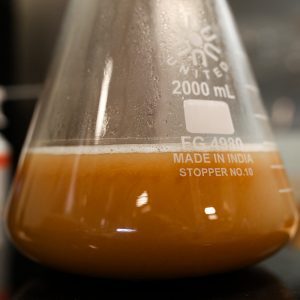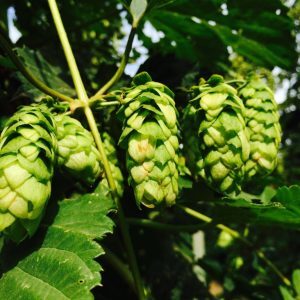Ingredients
- Posted: July 06, 2023Read more »
- Posted: July 06, 2023Read more »
Tins usage
How do I get the malt out of the tin?
You will need to open the tin and warm it up gently in a pot of water to help liquify all the malt goodness. Once the content seems runny enough, it is reday to transfer to your pot or fermenter.
How many tins do I need?
Most recipes call for 1 tin however the world is your oyster and you can experiment with 2 or even 3 tins! we recommend you take a look at our recommend tin or Kit & Kilo recipes.
Storage
How do I store my tin?
Similarly to all other food tins, in a dark and dry place such as a regular food pantry.
How long can I store my tin for before usage?
Every tin will have a best by use date on the bottom or top of the tin.
My tin has passed its best by use date, what do I do now?
Most people will discard the tin however some warriors have used them in the past and lived to tell the tale. There will be loss of flavour
- Posted: July 06, 2023Read more »
What are hops?
Hops are the female flowers of the hop plant (Humulus lupulus). They are used in brewing to add bitterness, flavor, and aroma to beer.
How do I use hops in brewing?
Hops can be used at different stages of the brewing process. They can be added during the boil to impart bitterness, added toward the end of the boil for flavor and aroma, and used for dry hopping during fermentation to enhance aroma.
How much hops should I use in my beer?
The amount of hops to use depends on various factors such as the beer style, desired bitterness, and hop characteristics. Recipes typically specify the amount of hops to use, but you can also experiment and adjust according to your taste preferences.
How do I measure hops?
Hops are typically measured in weight, usually in grams or ounces. A digital scale is a useful tool for accurately
- Posted: July 06, 2023Read more »
Can liquid yeast be shipped in the mail?
Absolutely! We will take great care of the packaging and ensure the yeast stays in as good condition as possible.How should I best use liquid yeast in my brewing process?
Using liquid yeast in brewing can enhance the flavor and character of your beer. Here are some tips for optimal usage:
- Properly store the liquid yeast in the refrigerator before use.
- Plan ahead and prepare a yeast starter to ensure a healthy yeast population and a strong fermentation.
- Follow the instructions provided by the yeast manufacturer for rehydration or direct pitching into your wort.
- Maintain a suitable fermentation temperature to promote yeast activity and flavor development.
- Consider using a yeast nutrient or energizer to support yeast health and fermentation performance.
What are the recommended Keg King products for using liquid yeast?
- Posted: July 06, 2023Read more »
What are fresh wort kits?
Fresh wort kits are convenient and time-saving options for homebrewers. They consist of pre-made, ready-to-use wort (unfermented beer) that has been professionally brewed and then packaged for homebrewing.
How do fresh wort kits work?
Fresh wort kits eliminate the need for the homebrewer to go through the entire brewing process, including mashing and boiling. Instead, the kits provide a pre-boiled and cooled wort that can be transferred directly into a fermenter, where yeast is added to begin fermentation.
What are the benefits of using fresh wort kits?
Fresh wort kits offer several advantages, including:
- Time-saving: With pre-made wort, you can skip several hours of brewing and focus on fermentation and other aspects of brewing.
- Consistency: Professional brewing ensures a high-quality and consistent wort base for your beer.
- Convenience: Fresh wort kits provide a convenient solution
- Posted: February 01, 2022Categories: IngredientsRead more »
Yeast is the magic ingredient in beer that transforms sugar into carbon dioxide (CO2) and Ethyl Alcohol. There are an enormous variety of yeasts both on the market and in the wild ready to capture, however there is one key difference between yeast that helps us to identify what species it is and how it will behave through fermentation. Simply put, yeast breaks into two categories, Saccharomyces Cerevisiae, and Saccharomyces Pastorianus. The notable difference between these two and how we do differentiate them is that S.Cerevisiae is a top fermenting yeast used primarily for ales and S.Pastorianus is a bottom fermenting yeast, used for the production of lagers. Saccharomyces Cerevisiae can be found in two forms, diploid (two complete sets of chromosomes) and haploid (one complete set of chromosomes). Saccharomyces is a yeast which is a member of the fungus kingdom. It is more commonly found in the diploid form and is oval shaped and sized at less than .01 of a mm. Saccharomcyces Pastornianus
- Posted: February 01, 2022Categories: IngredientsRead more »
For many, hops are the most exciting ingredient in beer. When talking to anyone about hops the first thing you will probably hear as the fun fact of the day, they’re closely related to marijuana. Don’t get too excited though, hops contain no THC.
Hops provide a lot of the aromatic character and majority of the bittering character within beer. Traditional hop varieties were quite low in Alpha acids and require a larger quantity for to reach a higher level of bitterness. Today there are many new varieties of hops grown in regions all around the world which people have come to know and love. They’re higher in alpha acids and have incredibly punchy aromas of citrus, berries, pine, and stone fruits. Alpha acids are found in three different types and depending on the hop variety will depend on what exact acid compound is found. The compounds are Humulone, Adhumulone and Cohumulone. Hops with a higher concentration of Cohumulone tend to


